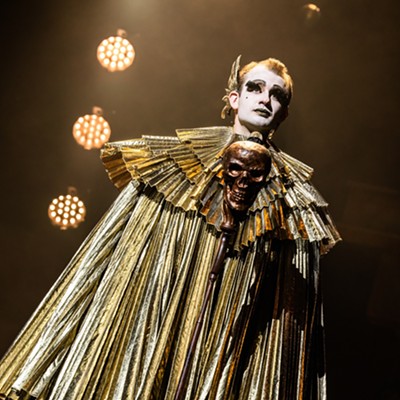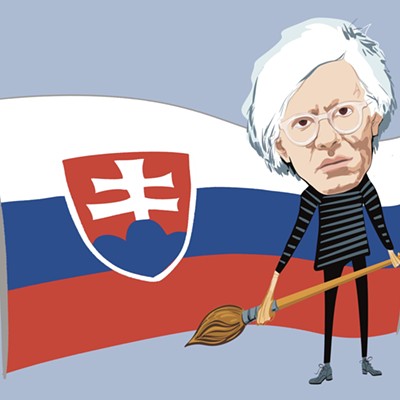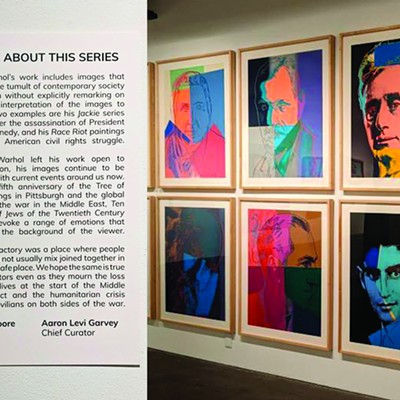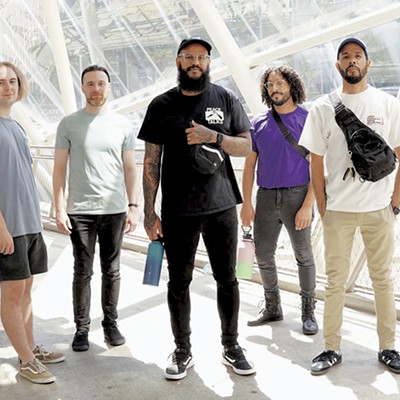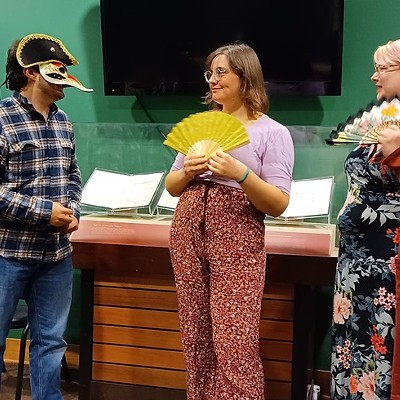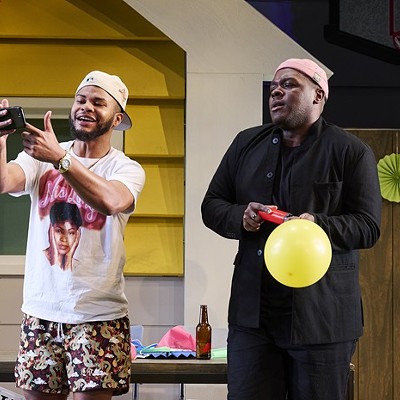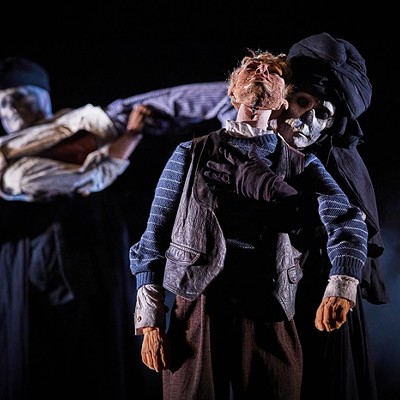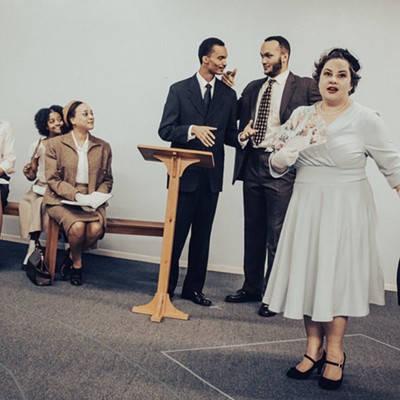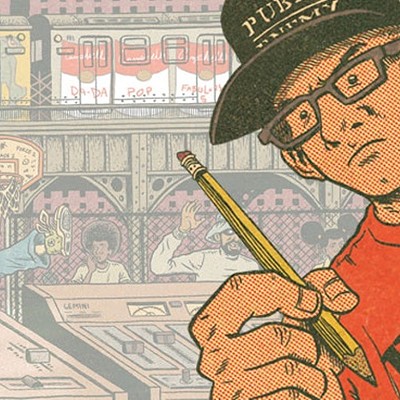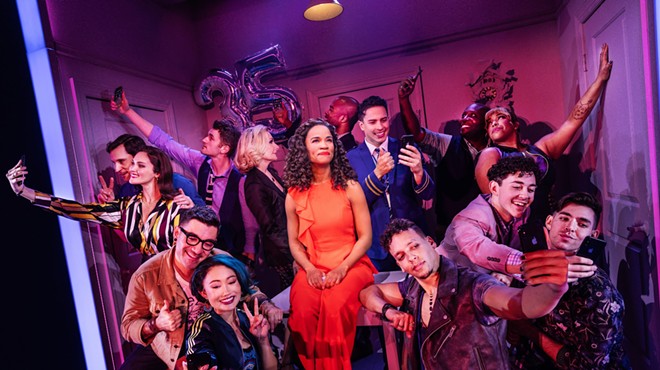A controversial attempt to honor a butoh master comes to town
“I was interested in looking within and thought Kazuo Ohno was the best model for that”
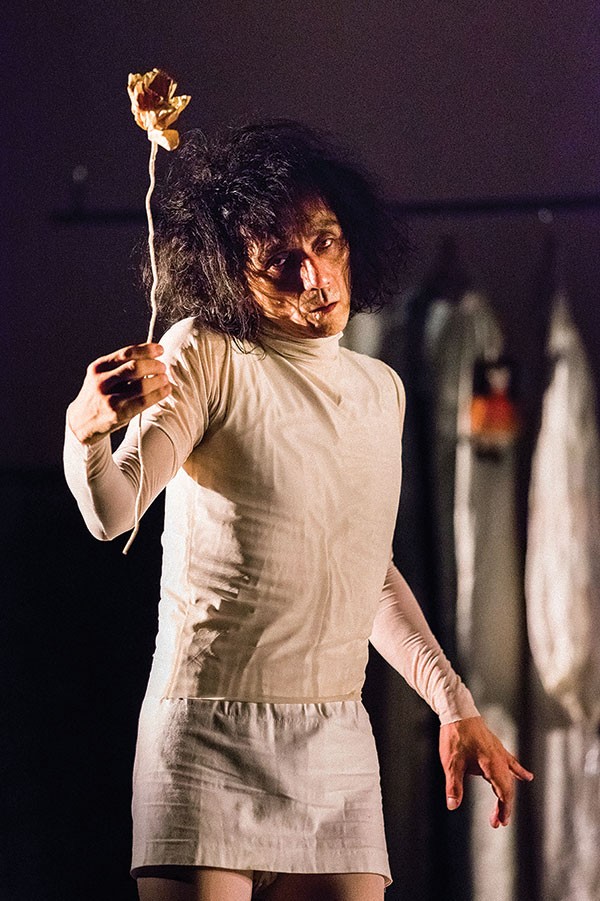
Takao Kawaguchi in About Kazuo Ohno
TAKAO KAWACHUCHI PERFORMS ABOUT KAZUO OHNO
8 p.m. Thu., Oct. 13. The Andy Warhol Museum, 117 Sandusky St., North Side. $12-15. 412-237-8300 or warhol.org
The dance form known as butoh is built on the idea of a performer finding the soul of the dance within himself. So when Tokyo-based dancer/performance artist Takao Kawaguchi premiered his solo program About Kazuo Ohno in 2013, to honor revered butoh co-founder Kazuo Ohno by literally copying his performances, it stirred controversy within the dance world. Some even viewed it as sacrilege.
Kawaguchi brings the production to The Andy Warhol Museum’s Warhol Theater on Oct. 13.
Kawaguchi, who studied mime-based physical theater and was a member of Kyoto artist collective Dumb Type, says he neither studied with nor saw Ohno perform live, but was struck by Ohno’s performances on film and video. Ohno, who with Tatsumi Hijikata helped launch butoh in Japan in the 1960s, passed away in 2010, at the age of 103. Ever-changing and difficult to define, butoh encompasses diverse motivations, movement and imagery. It is traditionally performed in white body makeup using slow, highly controlled motion.
Kawaguchi says About Kazuo Ohno was sparked by his performances of dance and theater works that focused on external relationships between him and the environment. “I was interested in looking within and thought Kazuo Ohno was the best model for that,” says Kawaguchi by phone from Hudson, N.Y., the second stop on a seven-city U.S. tour that ends in Pittsburgh.
The 110-minute production in two parts begins with “The Portrait of Mr. O,” Kawaguchi’s own improvisational work inspired by 1970s avant-garde films Ohno made. The second part finds Kawaguchi embodying Ohno in excerpts from masterworks including Admiring La Argentina (1977), My Mother (1981) and 1985’s The Dead Sea, Ghost and Wienerwaltz. Fortunately, Ohno’s debut performances in those works were filmed, and Kawaguchi has recreated Ohno’s movements. He also performs to the original soundtracks.
More than mimicry, Kawaguchi says he sees About Kazuo Ohno as a way for him and audiences to engage the great master. Kawaguchi has written: The viewer layers the reminiscence of Kazuo Ohno onto my body, and those who don’t know Ohno’s dance, their imagination of it. The multiple images of Ohno and myself merge, surface and recede in turn. “About Kazuo Ohno” is, in a sense, a duet I dance with the illusory image of Kazuo Ohno.
Kawaguchi brings the production to The Andy Warhol Museum’s Warhol Theater on Oct. 13.
Kawaguchi, who studied mime-based physical theater and was a member of Kyoto artist collective Dumb Type, says he neither studied with nor saw Ohno perform live, but was struck by Ohno’s performances on film and video. Ohno, who with Tatsumi Hijikata helped launch butoh in Japan in the 1960s, passed away in 2010, at the age of 103. Ever-changing and difficult to define, butoh encompasses diverse motivations, movement and imagery. It is traditionally performed in white body makeup using slow, highly controlled motion.
Kawaguchi says About Kazuo Ohno was sparked by his performances of dance and theater works that focused on external relationships between him and the environment. “I was interested in looking within and thought Kazuo Ohno was the best model for that,” says Kawaguchi by phone from Hudson, N.Y., the second stop on a seven-city U.S. tour that ends in Pittsburgh.
The 110-minute production in two parts begins with “The Portrait of Mr. O,” Kawaguchi’s own improvisational work inspired by 1970s avant-garde films Ohno made. The second part finds Kawaguchi embodying Ohno in excerpts from masterworks including Admiring La Argentina (1977), My Mother (1981) and 1985’s The Dead Sea, Ghost and Wienerwaltz. Fortunately, Ohno’s debut performances in those works were filmed, and Kawaguchi has recreated Ohno’s movements. He also performs to the original soundtracks.
More than mimicry, Kawaguchi says he sees About Kazuo Ohno as a way for him and audiences to engage the great master. Kawaguchi has written: The viewer layers the reminiscence of Kazuo Ohno onto my body, and those who don’t know Ohno’s dance, their imagination of it. The multiple images of Ohno and myself merge, surface and recede in turn. “About Kazuo Ohno” is, in a sense, a duet I dance with the illusory image of Kazuo Ohno.


